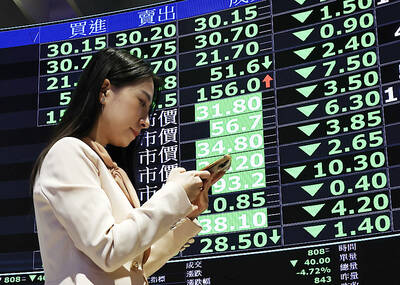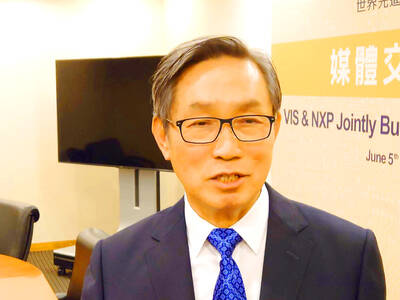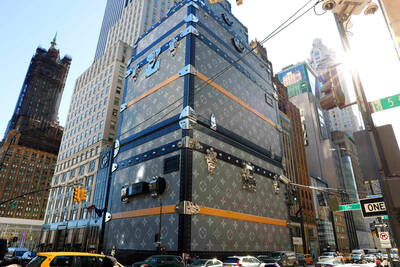US memory chipmaker Micron Technology Inc yesterday said it had fully restored the operation of a fabrication factory in Taoyuan from a “minor facility event” and it expects no material impact on its business.
The clarification came after media outlets raised concern over potential production losses.
“Regarding recent rumors about Micron’s fabrication facility in Taoyuan, Taiwan, Micron hereby clarifies that there was no nitrogen leaking incident nor evacuation of personnel,” Micron said in a statement..
The chipmaker said there was “indeed a minor facility event, but operations are recovering speedily.”
The Taoyuan fab is also one of its global production sites for DRAM chips, the company said.
Micron has a large manufacturing network, allowing the company to respond quickly, mitigate the effects of incidents at any specific site and assure full operation of the business as a whole, the statement said.
However, market researcher TrendForce Corp (集邦科技) yesterday said that the incident could have an effect on upcoming shipments of Apple Inc’s new iPhone series, as Micron’s Taoyuan fab produces low-power DDR4 DRAM used in the devices.
The Taipei-based researcher said that production at Fab-2, one of Micron’s manufacturing plants in Taoyuan, was disrupted on Saturday last week due to a malfunction in the facility’s nitrogen gas dispensing system.
The incident has contaminated wafers during manufacturing and equipment, TrendForce said in a report.
It is expected that about 60,000 wafers from a total 125,000 this month have been delayed, given that the cleaning and restoration of production capacity are time-consuming, TrendForce said.
The production loss would cut 5.5 percent from global DRAM monthly output, totaling 1.14 million wafers this month, aggravating the already tight supply of DRAM chips, TrendForce said.
Micron’s Taoyuan Fab-2 primarily produces DRAM chips used in PCs, servers and mobile phones, TrendForce said.
The reduction in DRAM supply might squeeze a persistent supply crunch and drive chip prices up further, it said.
“Some [DRAM] suppliers are already hinting that price hikes are on the horizon,” TrendForce said in the report.

TARIFFS: The global ‘panic atmosphere remains strong,’ and foreign investors have continued to sell their holdings since the start of the year, the Ministry of Finance said The government yesterday authorized the activation of its NT$500 billion (US$15.15 billion) National Stabilization Fund (NSF) to prop up the local stock market after two days of sharp falls in reaction to US President Donald Trump’s new import tariffs. The Ministry of Finance said in a statement after the market close that the steering committee of the fund had been given the go-ahead to intervene in the market to bolster Taiwanese shares in a time of crisis. The fund has been authorized to use its assets “to carry out market stabilization tasks as appropriate to maintain the stability of Taiwan’s

STEEP DECLINE: Yesterday’s drop was the third-steepest in its history, the steepest being Monday’s drop in the wake of the tariff announcement on Wednesday last week Taiwanese stocks continued their heavy sell-off yesterday, as concerns over US tariffs and unwinding of leveraged bets weighed on the market. The benchmark TAIEX plunged 1,068.19 points, or 5.79 percent, to 17,391.76, notching the biggest drop among Asian peers as it hit a 15-month low. The decline came even after the government on late Tuesday authorized the NT$500 billion (US$15.2 billion) National Stabilization Fund (國安基金) to step in to buoy the market amid investors’ worries over tariffs imposed by US President Donald Trump. Yesterday’s decline was the third-steepest in its history, trailing only the declines of 2,065.87 points on Monday and

TARIFF CONCERNS: The chipmaker cited global uncertainty from US tariffs and a weakening economic outlook, but said its Singapore expansion remains on track Vanguard International Semiconductor Corp (世界先進), a foundry service provider specializing in producing power management and display driver chips, yesterday withdrew its full-year revenue projection of moderate growth for this year, as escalating US tariff tensions raised uncertainty and concern about a potential economic recession. The Hsinchu-based chipmaker in February said revenues this year would grow mildly from last year based on improving supply chain inventory levels and market demand. At the time, it also anticipated gradual quarter revenue growth. However, the US’ sweeping tariff policy has upended the industry’s supply chains and weakened economic prospects for the world economy, it said. “Now

Six years ago, LVMH’s billionaire CEO Bernard Arnault and US President Donald Trump cut the blue ribbon on a factory in rural Texas that would make designer handbags for Louis Vuitton, one of the world’s best-known luxury brands. However, since the high-profile opening, the factory has faced a host of problems limiting production, 11 former Louis Vuitton employees said. The site has consistently ranked among the worst-performing for Louis Vuitton globally, “significantly” underperforming other facilities, said three former Louis Vuitton workers and a senior industry source, who cited internal rankings shared with staff. The plant’s problems — which have not